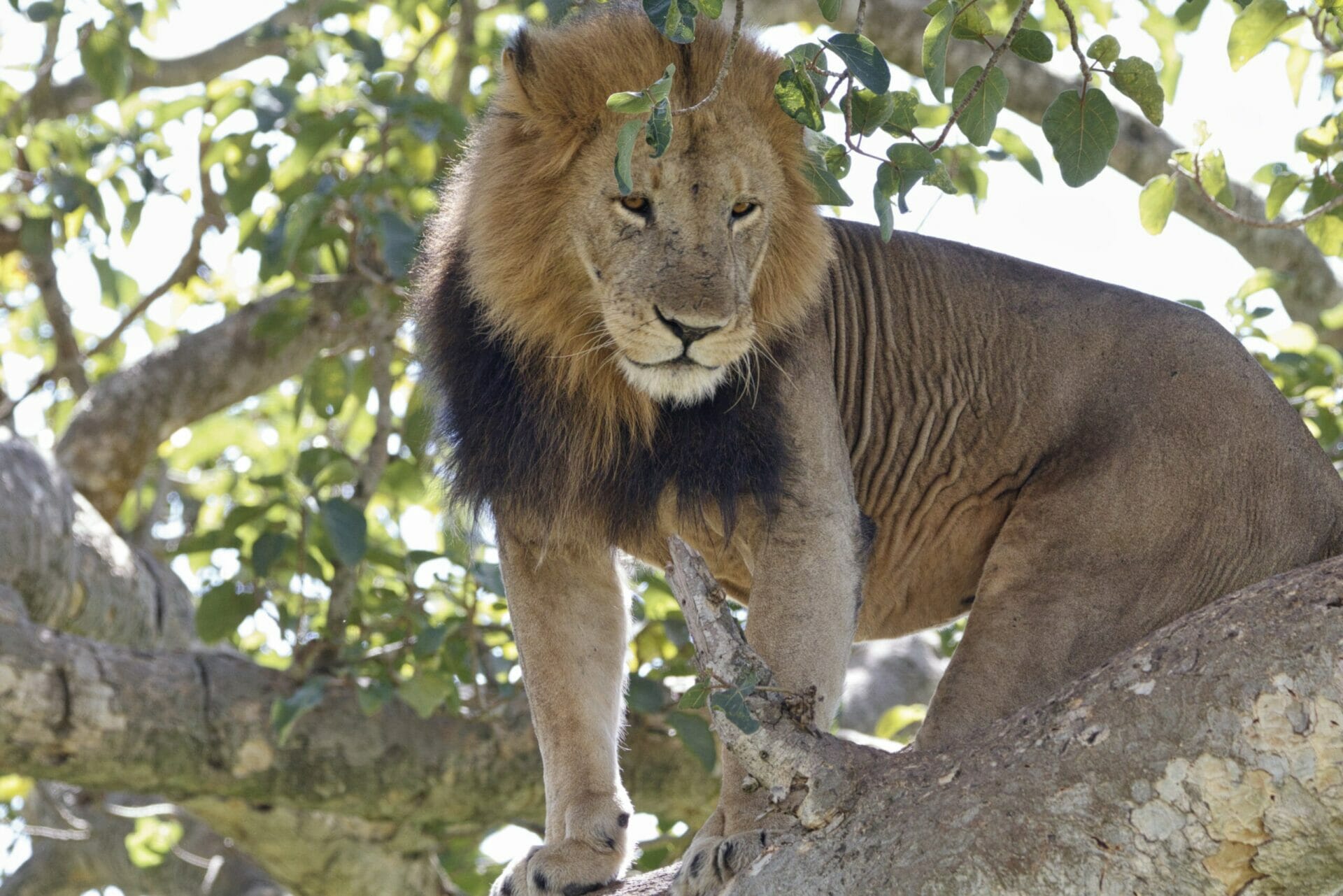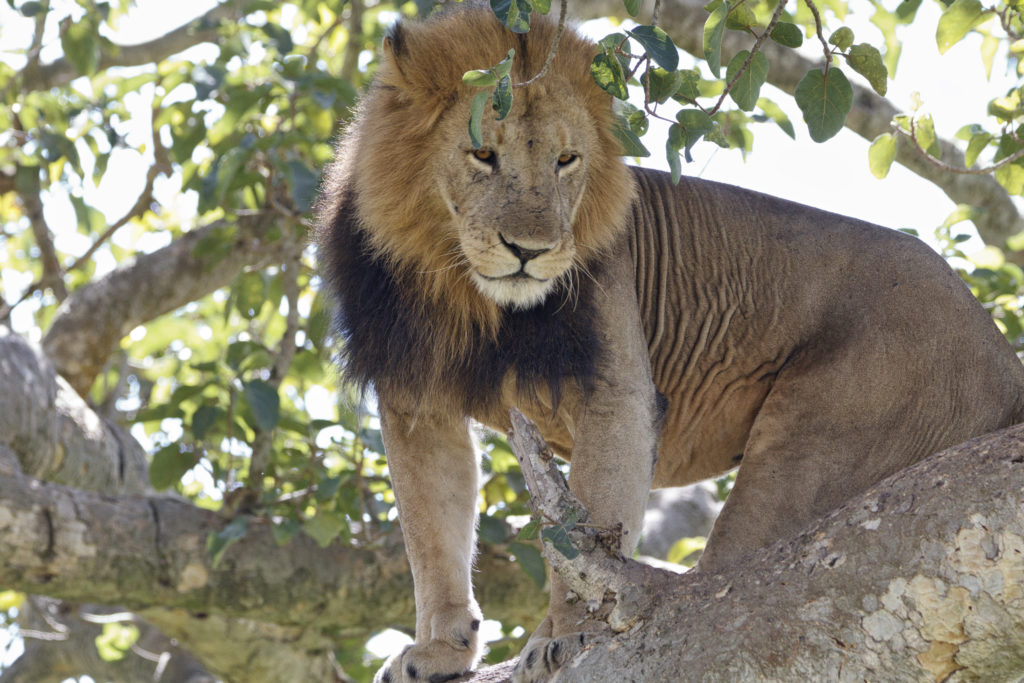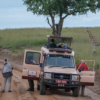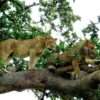Where to see the Big 5 in Uganda
When travelers search for where to find the Big 5, they are often pleasantly surprised to find out it’s possible in Uganda.
There are some countries that are well known internationally for their safaris that show-off the Big 5, like South Africa, Kenya, and Tanzania. In fact, there are 13 countries in total that make seeing the Big 5 Possible. Including those 3 we just mentioned, you also have Angola, Botswana, Zambia, Ethiopia, Namibia, Zimbabwe, Rwanda, Malawi, the Democratic Republic of Congo…
And Uganda!
Often referred to as the Pearl of Africa, Uganda is vibrantly rich in nature and landscape. The East African country possesses a perfect blend of fauna and flora to keep tourists in high praise whenever they are done with their trips.
So why would you come to Uganda to try and see the Big 5? Because this is where the Big 5 isn’t just an amazing goal – it’s the start of a beautiful wildlife adventure.
Uganda, which is also known to have the most significant number of mountain gorillas in the world, also nurtures other unique species worth exploring for the country’s visitors. The country has ten national parks, 13 wildlife reserves, 345 mammal species, 1,020 bird species (half the total number in Africa), and 4500 species of vascular plants.
Thanks to its vast range of habitats, the country is regarded as the hotspot for biodiversity. The tiny country offers the perfect escape for those looking to maximize time in the wild. Uganda is one of only three mountain gorilla sanctuaries in the world. You can enjoy the exquisite gorilla tracking activity, and among only thirteen where you can glimpse the Big 5 animals.
You are most likely to see the Big 5 in predominantly three regions, namely Queen Elizabeth National Park, Murchison Falls National Park, and Kidepo Valley National park.
The animals in Uganda can be grouped into the following categories:
- Primates: These include mountain gorillas, chimpanzees, golden monkeys, red-tailed monkeys, grey-cheeked mangabey, and many others
- Carnivores: lions, cheetahs, leopards, African wildcats, hyenas, etc
- Herbivores: Elephants, buffalos, giraffes, rhinos, hippos, zebras, antelope, Ugandan Kob, and others
- Reptiles: snakes, crocodiles, monitor lizards, chameleons, and others
- Birds: vultures, African eagle, turacos, and others
Which animals are part of the Big 5?
The ‘Big 5’ concept first came about in the old days when the land’s ancestors used to go hunting. The animals weren’t named ‘The Big 5’ due to their size, but rather because they were the hardest to catch and posed the gravest danger to the hunter. Hunting down any of the Big 5 earned a hunter a reputation in the African society as a brave hunter, and clan heads often rewarded them with a trophy for their bravery.
Whereas game hunting is now prohibited in most corners of the globe, over a hundred years ago, the then-American president Theodore Roosevelt embarked on an African hunting escapade. He was later quoted saying that the African elephant would never become extinct due to the sheer number he had encountered. Today, however, the Big 5 are among the most endangered species globally, and most African governments have put up strict measures to conserve the dwindling species.
The Big 5, in this case, are the following;
- The African lion
- The African leopard
- The African elephant
- The Cape buffalo
- The rhinoceros
Now, though, the Big 5 is known more as a chance to see some of the world’s most incredible creatures in their natural habitats while on an African safari that helps to contribute to their protection.
Wondering where you can see Big 5 animals in Uganda? You came to the right place!
Where to see the African Lion in Uganda
The African lion is the second-largest cat in the world, and whereas it is referred to as the “King of the Jungle,” lions stay in grassy savannas, not dense forests. Lions are social creatures and move together in groups known as prides. Each pride consists of over 30 lions.
A lion’s roar can be heard from over 5 miles away. Unfortunately, there are estimated to be less than 20,000 lions left globally, and the International Union for Conservation of Nature (IUCN) termed them endangered.
Lions in Uganda can be found in Queen Elizabeth National Park, Murchison Falls National Park and Kidepo Valley National Park. Since they are mainly night hunters, you stand a bigger chance of spotting them during a night game drive (unless you’d like to catch them having a catnap!). Therefore, if you plan to visit Queen Elizabeth National Park and want to do the night game drive, your guide should get a tracking device to locate them.
Where to see the African Leopard in Uganda

Like lions, your best chance of glimpsing leopards is during night game drives in Kidepo Valley National Park, Lake Mburo National Park, Mgahinga Gorilla National Park, Kibale Forest, Murchison Falls National Park, Queen Elizabeth National Park, and Mount Elgon National Park.
Where to see the African Elephant in Uganda

The best part of visiting Uganda is that you will have a 90% chance of spotting an elephant in any of the parks you opt to stay in. If you are lucky enough, you will see both the smaller forest elephants and the colossal savannah elephants.
The best parks to enjoy these massive creatures include Murchison Falls National Park and Queen Elizabeth National Park.
Where to see the Cape Buffalo in Uganda
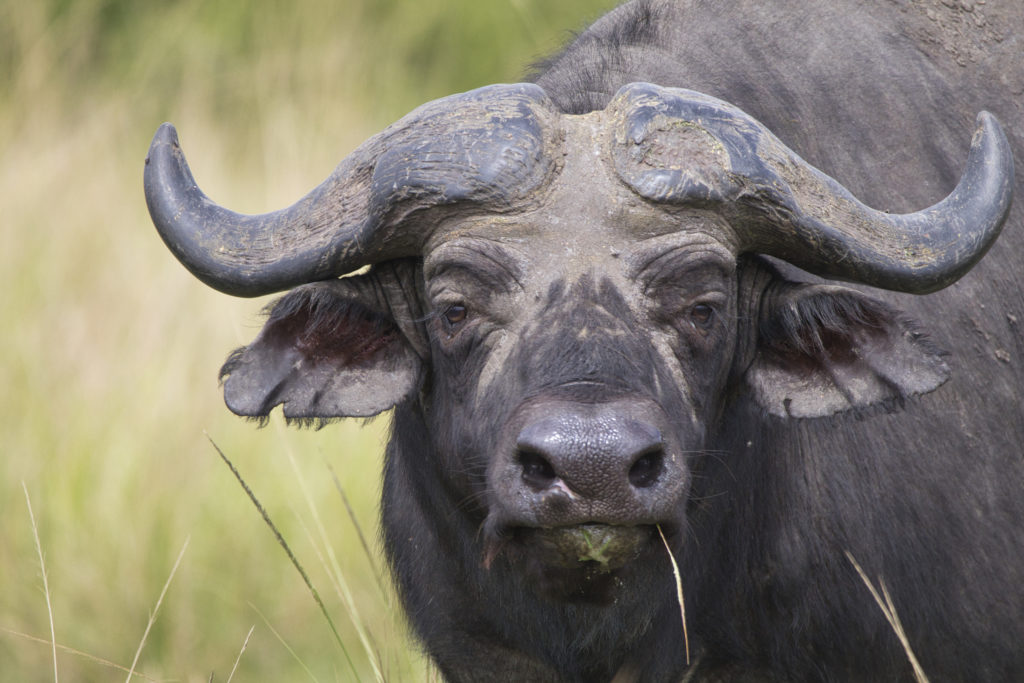 Nicknamed the “The Widowmaker,” the Cape buffalo was once considered the hardest to hunt in the Big 5 due to its unpredictable behavior. And unlike the other members of the Big 5, the Cape buffalo will fight off most of its predators.
Nicknamed the “The Widowmaker,” the Cape buffalo was once considered the hardest to hunt in the Big 5 due to its unpredictable behavior. And unlike the other members of the Big 5, the Cape buffalo will fight off most of its predators.
Buffalos reportedly kill more humans (poachers) than other animals. There are reportedly 900,000 in population with four different sub-species with the vastest number in protected reserves.
Uganda also, however, has unique reddish small buffalos. In addition, you can encounter buffalos in Uganda in Kidepo Valley National Park, Lake Mburo National Park, Queen Elizabeth National Park, and Murchison Falls National Park.
Where to see Rhinoceros in Uganda
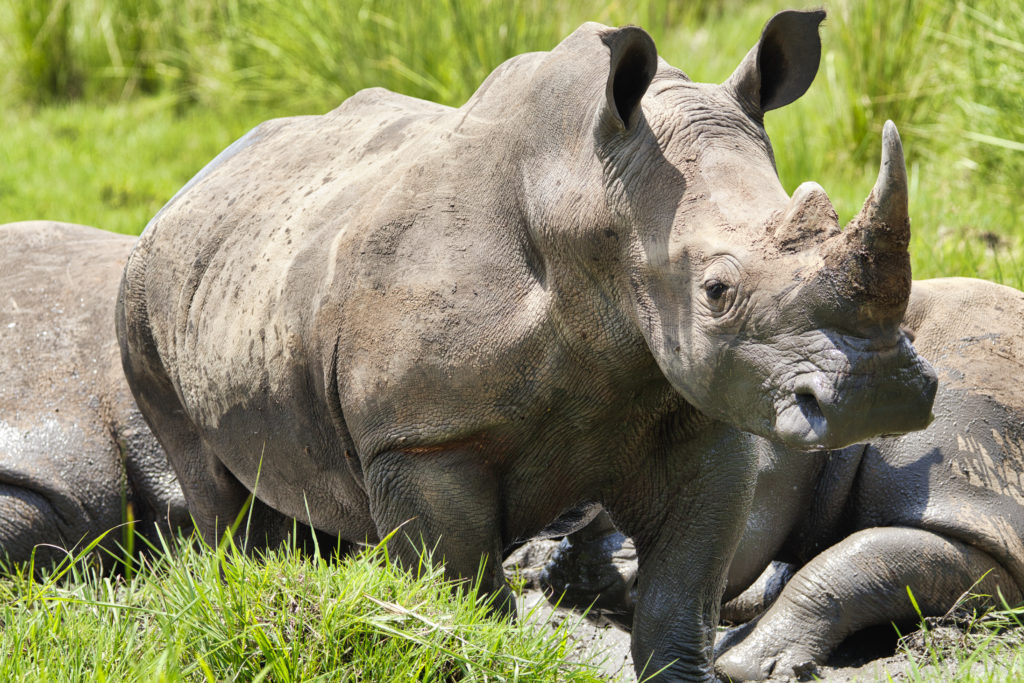
Rhinos are divided into species; the White Rhino and the Black Rhino. Rhinos live mainly in grasslands and open savannas. They are robust and thick in body size and can reach speeds of up to 30 miles per hour. There are, however, only 29,500 Rhinos left on the globe. As a result, the IUCN listed rhinos as critically endangered.
Rhinos in Uganda are predominately preserved and rehabilitated at Ziwa Rhino Sanctuary and is your best opportunity of seeing the Southern White Rhino. You can do this Ugandan rhino tracking experience on your way to or back from the Murchison Falls National Park.
How long to spend in Uganda for a Big 5 Wildlife safari
The time it takes to see the Big 5 varies. It can be done in as little as a few days. You can also stretch out your Ugandan safari tour for a week or two to add in chances to see more animal species, visit with local communities, and track the gorillas.
To get an African safari trip designed just for you, get in touch with the expert team at Kikooko Africa Safaris today!

